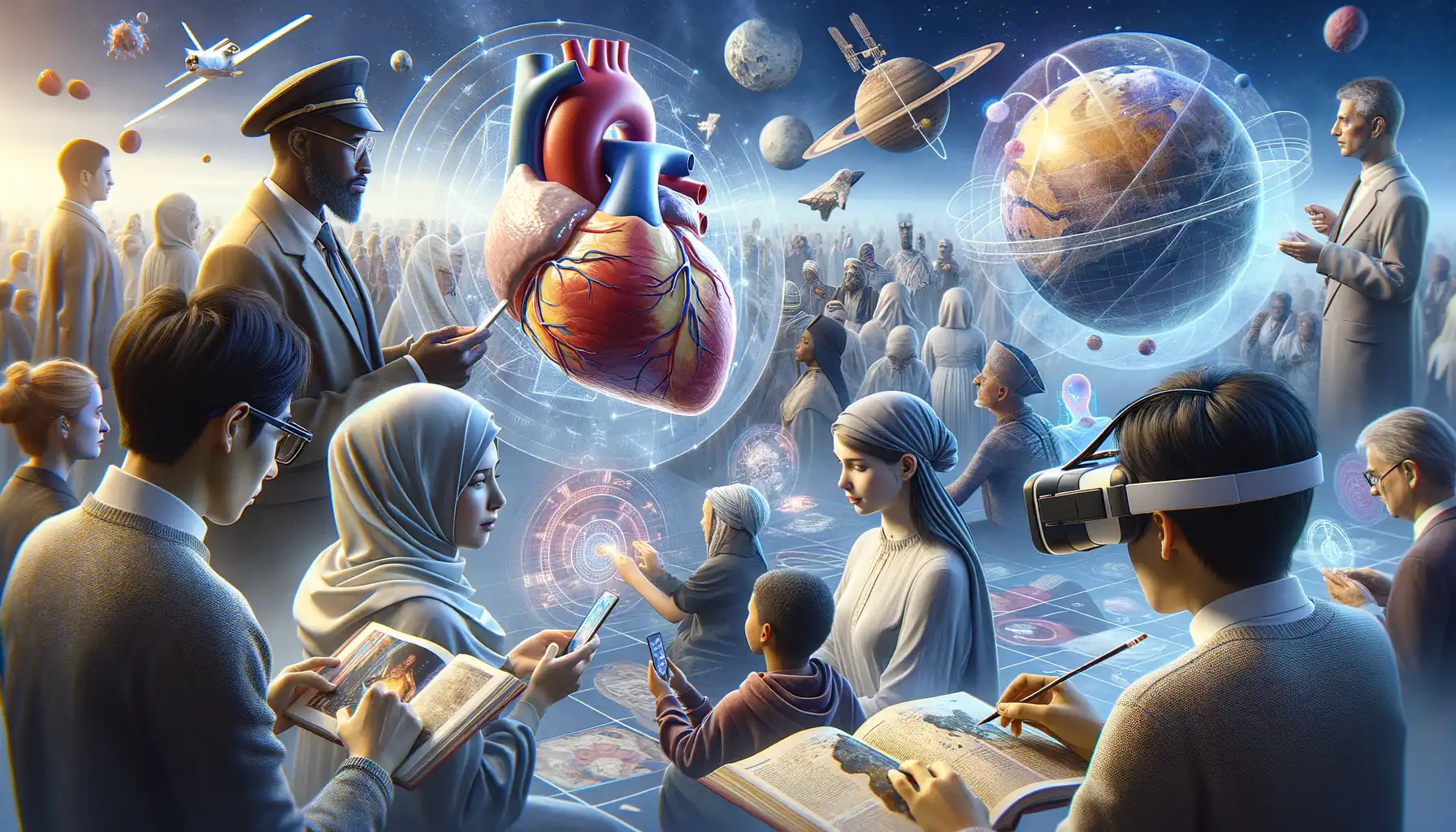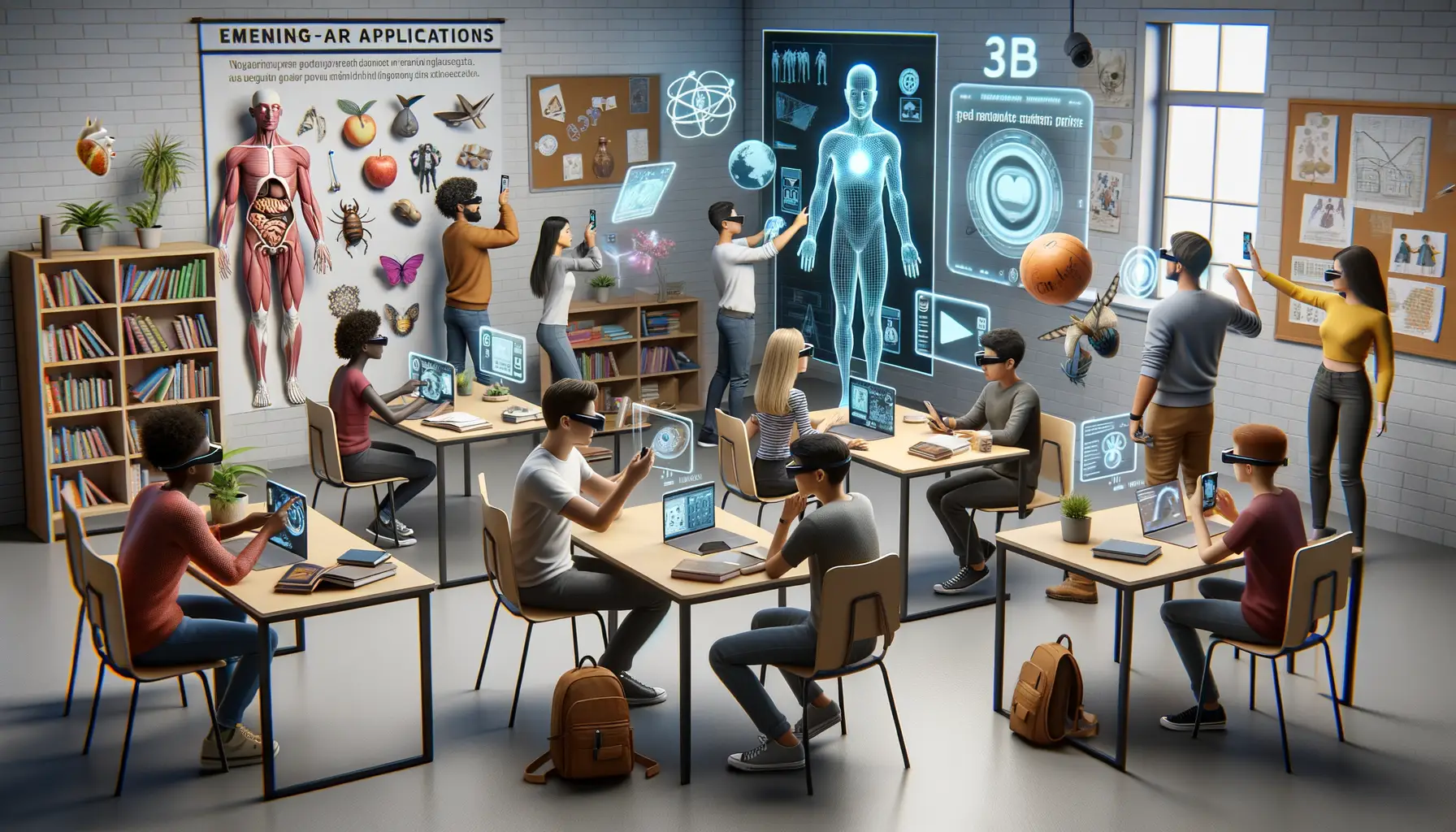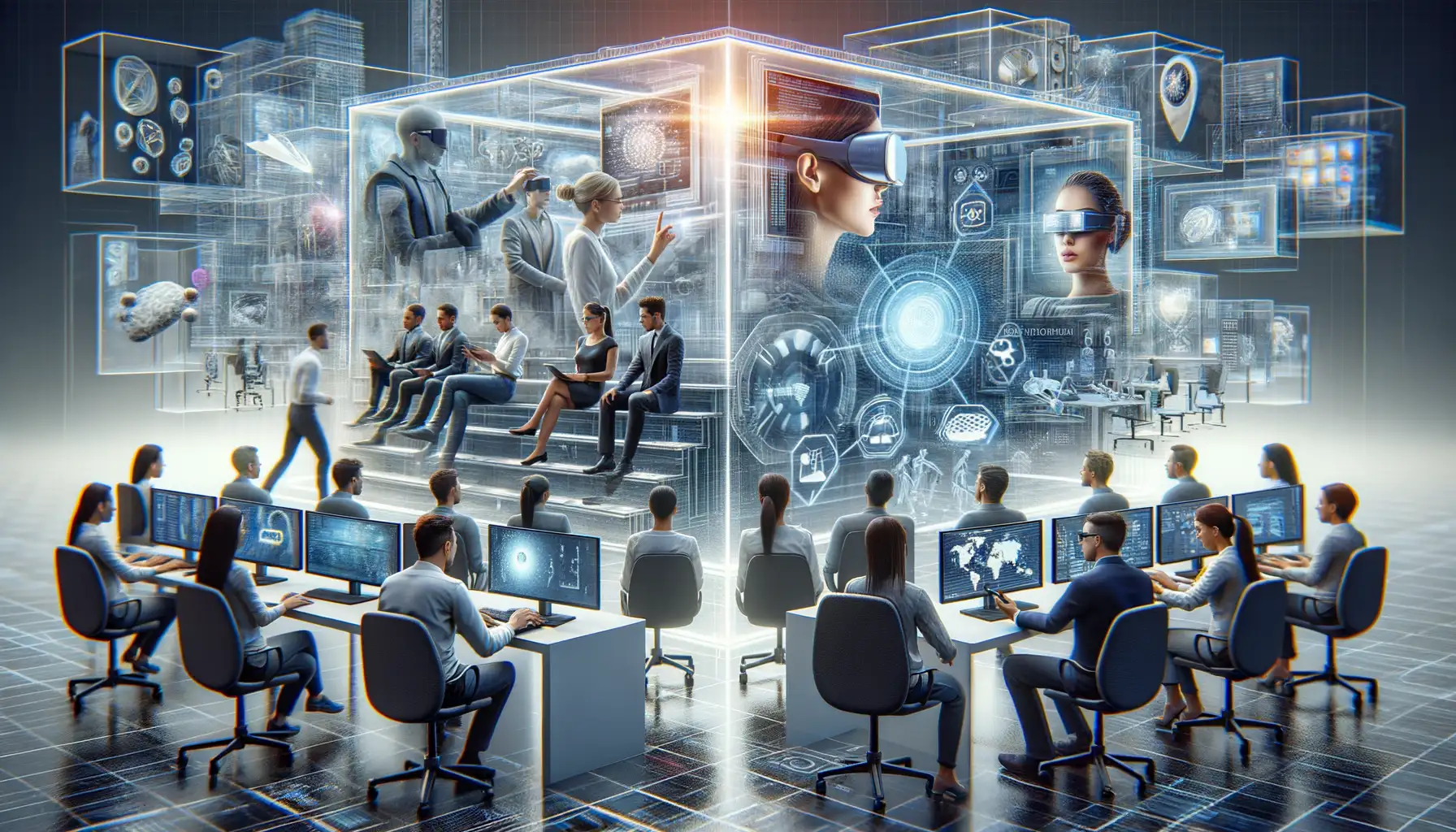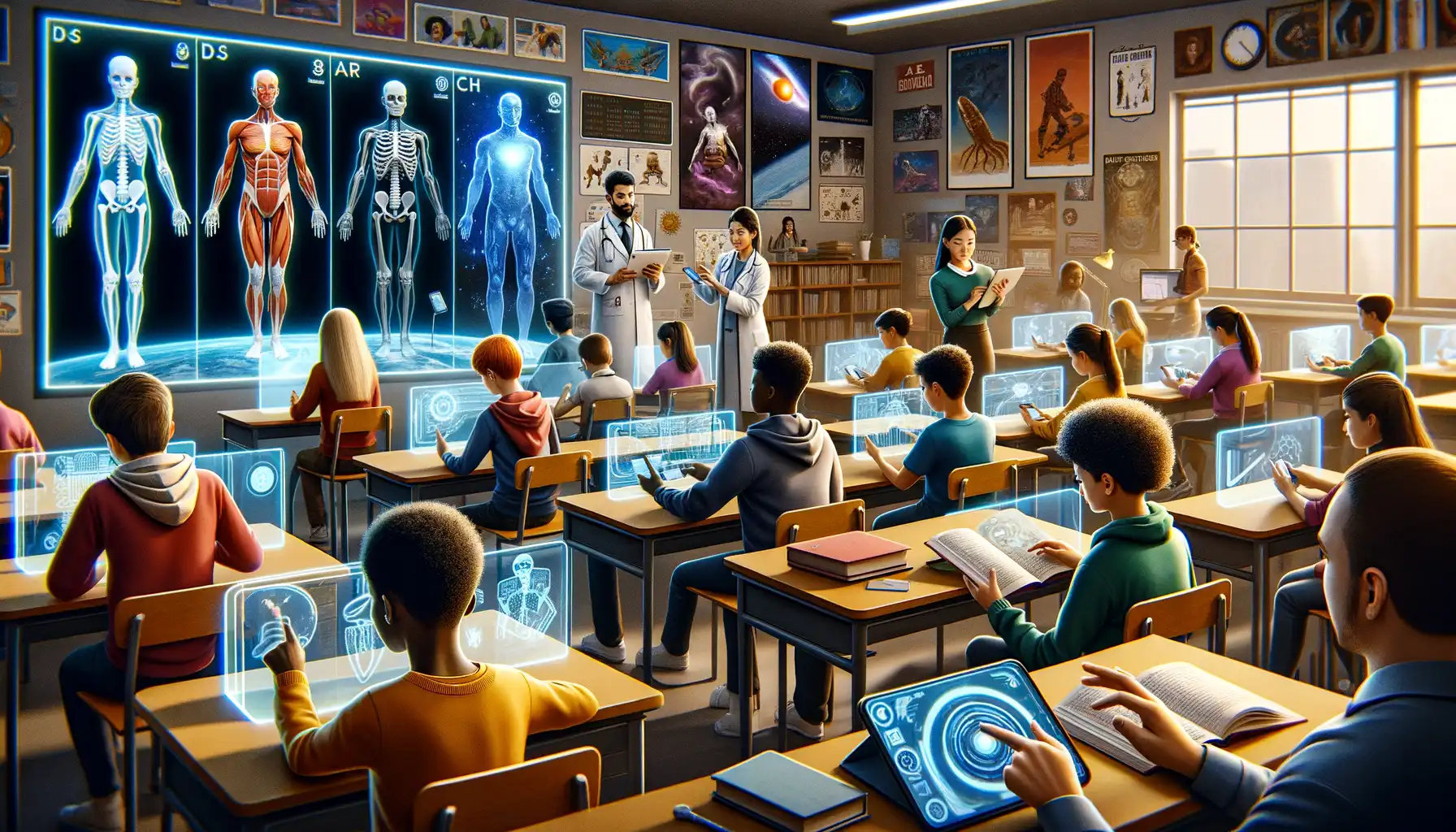The Future of Augmented Reality in Education
Introduction to Augmented Reality in Education
Close your eyes for a moment and imagine walking into a classroom where words from a history textbook leap off the page, swirling into a 3D timeline in front of you. Or picture dissecting a frog without ever picking up a scalpel, guiding your movements with interactive holograms. This isn’t some futuristic fantasy—it’s the world of Augmented Reality (AR) in education, and it’s here to revolutionize how we learn.
Where Virtual Meets Reality: The Magic of AR
The beauty of AR technology lies in its ability to blend the physical and the digital. It doesn’t pull students away into entirely virtual spaces but rather enhances the reality they already know, layering it with creativity, interactivity, and deeper understanding. Imagine scanning a globe with a tablet and watching climate changes play out in real time or solving math equations by manipulating 3D geometric shapes that hover in midair.
And AR isn’t just fun—it’s functional. Whether it’s engaging visual learners or providing hands-on practice in abstract subjects, this tech shifts learning from a passive experience to an active adventure. Some key possibilities include:
- Bringing historical events to life through 3D reenactments.
- Creating immersive science experiments without lab hazards.
- Breaking language barriers with live translation overlays.
Why It Feels So Personal
What makes AR so emotionally impactful is how it speaks to our innate curiosity. Instead of reading about something, you interact with it—like holding the solar system in your hands or walking through the human brain as if it were a theme park. For kids who dread textbooks or struggle to stay engaged, AR can be that spark, that “aha!” moment where everything clicks.
So, whether you’re an educator looking to reignite your students’ passion for learning or just someone intrigued by how technology can reshape reality, AR invites us all to think bigger, dream harder, and learn more deeply than ever before.
Benefits of Augmented Reality for Learning

Transforming Learning into an Immersive Adventure
Imagine a classroom where history isn’t just read about but *experienced*. With Augmented Reality (AR), students can explore ancient civilizations, walk through the solar system, or even dissect a virtual organism—all without leaving their seats. It’s like giving your imagination a teleportation device!
What makes AR so magical is its ability to blend the real and virtual worlds. For visual learners, this means complex concepts—like the inner workings of the human heart—can literally pop out of textbooks in 3D. Suddenly, abstract ideas become tangible, interactive, and unforgettable. This taps directly into the part of our brains that craves novelty and connection, fostering deeper understanding.
- Engagement skyrockets: Forget passive lecture listening. AR makes learning hands-on, keeping students on the edge of their seats.
- Diverse learning styles supported: Visual, auditory, or kinesthetic learners? AR has something for everyone.
- Real-world connections: Want to understand how bridges stay standing? Walk under a virtual one in physics class!
AR empowers learners to step into scenarios they’d otherwise only dream of. And let’s be honest—what student wouldn’t prefer battling with virtual molecules over memorizing dry formulas?
Current and Emerging Applications of AR in Classrooms

Bringing Lessons to Life with AR
Imagine walking into a classroom where lessons don’t just sit on paper—they leap out at you, alive and interactive. With the magic of Augmented Reality (AR), this isn’t science fiction; it’s happening now. Picture this: history students exploring ancient Rome as if they’re tourists in 75 BC or biology learners examining a beating heart from every angle—without ever touching a scalpel. AR transforms the ordinary into something unforgettable.
Current applications include apps like Quiver, where kids can color in a flat picture only to see their masterpieces spring to life in 3D through a tablet. Math problems are no longer abstract; AR overlays allow students to “grab” geometric shapes, manipulate them, and truly understand spatial relationships. It’s tactile learning without the mess!
- Language classes: Translate foreign street signs or create virtual flashcard games that pop up mid-lesson.
- Science labs: Dissect frogs without the smell—or the ethical concerns!
The Next Frontier in AR Innovation
The future promises even more jaw-dropping moments. Emerging technologies like AR glasses, such as HoloLens, will shift learning from handheld devices to full immersion. Imagine a chemistry class where atoms float in mid-air for students to assemble into molecules. Or geography lessons that let you walk through the Amazon rainforest virtually while listening to its symphony of sounds.
There’s also significant potential for personalized teaching. AR systems might soon adapt content to each learner’s pace, letting the shy student explore independently while the go-getter dives straight into challenges. It’s not just tech—it’s a tool to shape education into an adventure.
Challenges and Considerations for Implementing AR

What Stands in the Way of Seamless AR Adoption?
Picture this: a classroom where ancient history comes alive in 3D, or cells divide before your eyes in a biology lesson. Sounds magical, right? But behind the curtain of that dazzling experience lies a maze of challenges. Implementing augmented reality isn’t as simple as downloading an app and calling it a day.
First, let’s talk about the elephant in the room—cost. High-quality AR equipment doesn’t come cheap. Schools often operate on stretched budgets, making it hard to justify spending on AR headsets or compatible devices when textbooks and basic supplies are still in demand.
Then, there’s the question of tech literacy. Not every teacher is a tech wizard, and expecting them to embrace AR without extensive training is like handing someone car keys without explaining how to drive.
Even content availability plays a significant role. Sure, there are wonderful AR tools for STEM subjects, but what about literature, art, or history? The market hasn’t fully caught up yet, leaving gaps that educators are eager—but unable—to fill.
Let’s not forget privacy concerns. Collecting student data for personalized AR experiences can feel intrusive if safeguards aren’t watertight. Balancing innovation with ethical considerations is no easy feat.
The Human Factor: Resistance and Readiness
Change always stirs up resistance, doesn’t it? Some educators see AR as disruptive rather than enriching. They worry it might distract from traditional teaching methods or overwhelm younger learners who already spend plenty of time glued to screens. Parents might echo these sentiments, raising questions like: “Is this truly beneficial, or just another gadget vying for attention?”
The truth is, AR demands a mindset shift. It challenges the comfort zones of schools used to chalkboards and paper tests. And yet, isn’t that discomfort where real growth happens?
Future Trends and Innovations in AR for Education

Exciting Technologies That Will Transform Learning
Imagine a classroom without walls, where history lessons transport students to ancient Rome and biology discussions place them inside the cell of a living organism. The future of augmented reality (AR) in education is nothing short of magical, with new trends set to revolutionize how we learn.
One standout innovation? Wearable AR devices. Forget bulky tablets or smartphones—lightweight smart glasses are becoming the next big thing. Picture students conducting science experiments with holographic instructions appearing right before their eyes. No more tedious lab manuals, just hands-on learning at its finest.
Another game-changer is the rise of AI-powered AR tutors. By combining artificial intelligence and augmented reality, these tools will adapt to individual learning styles. A shy student struggling with math could receive step-by-step problem-solving tips tailored just for them. It’s like having a patient, never-tired tutor available 24/7.
- Interactive AR textbooks that “come alive” with videos and 3D models.
- Virtual collaboration spaces where students from different continents can solve problems together.
The fusion of AR with other emerging tech, like blockchain for tracking academic achievements or brain-computer interfaces, might sound futuristic now—but just wait. The classroom of tomorrow is being built today, brick by fascinating brick.
Personalized Learning Through AR Futures
Let’s talk about personalization. With advancements in AR analytics, educators will soon gain real-time feedback on student engagement. Imagine software that can analyze which parts of a lesson light up students’ curiosity—and pivot instantly if someone gets stuck. A once-size-fits-all approach will be replaced by bespoke learning journeys.
Gaming-inspired AR teaching tools will also bloom. Think of these as the “level-up” moment for education. Students might earn rewards for completing learning quests or explore virtual worlds tied to curriculum goals. Take geography, for instance—why memorize capitals when you can “travel” to each country through an immersive AR globe?
In this not-so-distant future, education won’t feel like a chore. It will be an adventure crafted uniquely for every learner. Whether you’re visual, auditory, or kinesthetic, AR will meet you precisely where you are.
